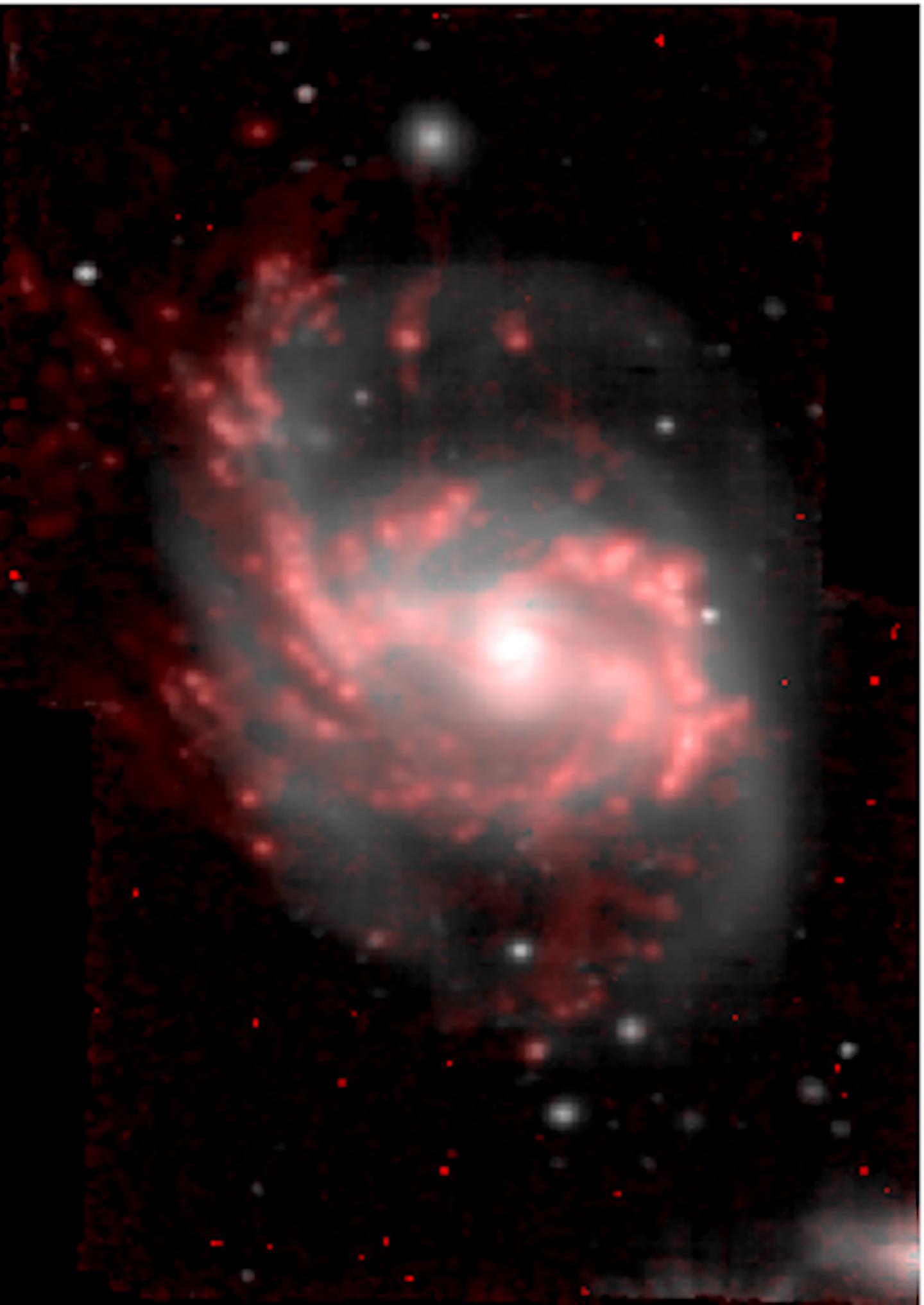
Out in the depths of space, you can find strange things. One example of such oddities are “jellyfish galaxies,” which have tendrils of stars that stream away from the main body of the galaxy like the tentacles of a jellyfish. When a galaxy passes through the dense core of a galaxy cluster, the gravity of nearby stars tears gas away from the galaxy and leaves the tendrils behind.
Now, an astronomer has investigated what happens to these galactic jellies when they interact with supermassive black holes. A particular jellyfish galaxy, JO201, has been identified that has a supermassive black hole at its heart which is stripping away gas. This in turn prevents star formation, effectively killing the galaxy.
“A galaxy sustains itself by constantly forming new stars from gas, so understanding how gas flows into and out of a galaxy helps us learn how it evolves,” Callum Bellhouse of the University of Birmingham, a researcher on the project, explained in a statement. “The example of JO201 shows how the balance tips towards then away from star-formation as it plunges through the galaxy cluster and faces increasingly extreme stripping of its gas.”
JO201 has spent roughly one billion years passing through the massive Abell 85 cluster at supersonic speeds, leaving trailing tentacles 94 kiloparsecs long behind it. For reference, the length of the trails is around three times the diameter of the Milky Way.
During JO210’s travels, the level of star formation actually increased for a time as gas was compressed into knots within the tentacles, and when these pockets of dust collapsed they formed new stars. But all that action caught up with the galaxy eventually, as gas was stripped away from the galaxy and funneled into the supermassive black hole at its center.
“An important balancing act occurs between processes which either boost or diminish the star formation rate in jellyfish galaxies. In the case of JO201, the central black hole becomes excited by the ram-pressure stripping and starts to throw out gas. This means that the galaxy is being hollowed out from the inside, as well as torn away from the outside,” Bellhouse said.
This study helps us to understand the process through which galaxies develop and change, and their delicate relationship with supermassive black holes.
“JO201 is, so far, a unique example of a supermassive black hole and ram-pressure stripping in quenching star formation in a jellyfish galaxy,” Bellhouse said. “Studying these curious objects gives us an insight into the complex processes that galaxies experience.”
Editors' Recommendations
- Monster black hole gives off epic radio emissions as it chows down on gas
- How James Webb will peer through a dusty cloud to study supermassive black hole
- See a map of 25,000 supermassive black holes in distant galaxies
- Stuff of nightmares: Black holes one hundred billion times the mass of the sun
- Uh-oh: Black hole up to 100 billion times the mass of the sun has vanished




